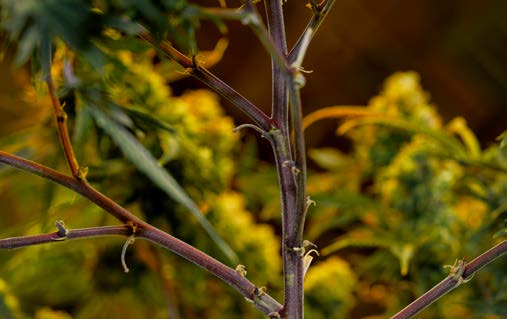Diagnosing Plants
By Colin Gordon & Ben Owens
To properly diagnose anything, you need
to ask questions.
You can’t simply look at a picture of
something fixed in time and understand
what is happening without context. There
are a few basic things that you must first
establish.
For example, say someone shows you
a picture of a leaf with some necrosis.
Without context, there is no way for you
to know what is happening to that plant
or leaf.
Plant Diagnosis Questions
- First Question: Location of problem
° Is it the leaf? Internode?
° What part of the plant is that on?
° Top middle bottom?
° Inside of plant?
° Is it an old growth or a new growth?
- Second Question: What phase is the
plant in?
° Is it in veg? Flower?
° What phase of that stage?
- Early veg? Late veg?
- Early flower? Week 7?
- Third Question: Environmental Conditions
& Variables
° How is the ventilation (in/outtake)?
° How is your circulation (air movement
within the room)?
° What are your temperatures and
their fluctuations?
° What are your humidity ranges?
° What are your CO2 levels?
° What is the light intensity, range,
and spectrum that the plant is
receiving?
- Fourth Question: Feeding Schedule &
Substrate
° Evaluate the feeding schedule and,
subsequently, the substrate.
° What is the feeding schedule?
° What is the EC/PPM in both feed
and runoff?
° What is the substrate?
° Check your substrate to ensure it is
within its desired parameters.
The more information that you are able to
acquire, the more educated the guess.
If you see a problem in a room, some
of these categories will be obvious, like
where the leaf is, but all of the categories
are vital in understanding what the problem
could be.
The easiest problem to identify are the
ones you have already seen and solved
previously.
When diagnosing a problem in a foreign
or new environment, all of us are taking
our best guess, even with all the information
and all of the variables accounted
for. Even with good metrics and proper
measurements accounting for all of the
minutiae and all of the sub categories, we
may still be stuck, and still find ourselves
guessing.
Just like with diagnosing anything, you
want to start with the most likely and
probable causes.

What to Do While You Diagnose
With most problems, while acute, there are some general, temporary solutions that can reduce further damage as you figure out and diagnose the problem. These may not always be correct, but are likely to prevent further issues in many cases.
If you have plants that are visibly burning in some way, or highly stressed, reduce the nutrients by half and reduce uMole by 20-30%.
Once a plant is unhealthy, its immunity is compromised and it is now more susceptible to stresses. Too much light and too much nutrients can turn very bad, very quickly when a plant gets stressed. A reduction in nutrients and in the amount of light as a temporary action will usually mitigate the effects of the additional stresses, with the exception of pythium, in which case you would lower the light to increase intensity, as a lack of photons is often the cause of pythium.
In summary, while you figure it out, reduce light and nutrients to avoid more problems.
Most Common Misdiagnoses:
“Yellow Leaves” - When you notice yellow leaves, recognizing where the leaves are located, as well as size and phase of the plant, is vital.
If you have a reasonably sized plant, and your lowest fan leaf is turning yellow, it’s simple; it’s a nitrogen deficiency.
In general a nitrogen deficiency will express as a fan leaf losing its green and will typically be on the bottom half of the plant, on one or some of the older leaves. The other presentation of a nitrogen deficiency is a general pale yellow of the entire plant.

“Purple Stems”
The most common mistake when diagnosing “purple stems” is mistaking purple petioles (leaf stems) for purple internodes.
If your have green internodes and purple petioles, the expression is a natural process and not the result of a deficiency.
Purple internodes, on the other hand, are often an indicator of a problem, but not always.
If an internode does not grow to its full extension, when an internode is not stretching at its full growth rate, it will acquire purpling (like tree bark).

It’s very important to know whether this is from a nutrient deficiency or, in a moderately modern case, LED fixtures, which have a tendency to create more compact growth. And, because the stems aren’t elongating as much, they acquire purple stems, but that doesn’t mean your plant is unhealthy. The plants are just growing shorter than their potential.
If your internodes are purple and it’s not due to compact growth, you either have a deficiency or a nutrient uptake problem. In most cases, particularly in veg, it is a phosphorous deficiency, and often potassium as well.
With EC4 or Amnesia Haze, for example, I want those stems short, and I’m ok with purpling as long as the photon output is what is keeping the plant compact.
In flower, after week 5, when vertical and lateral growth cease, it is only natural now that the plant will incur some purpling.
It’s Not You, It’s Your Plant
